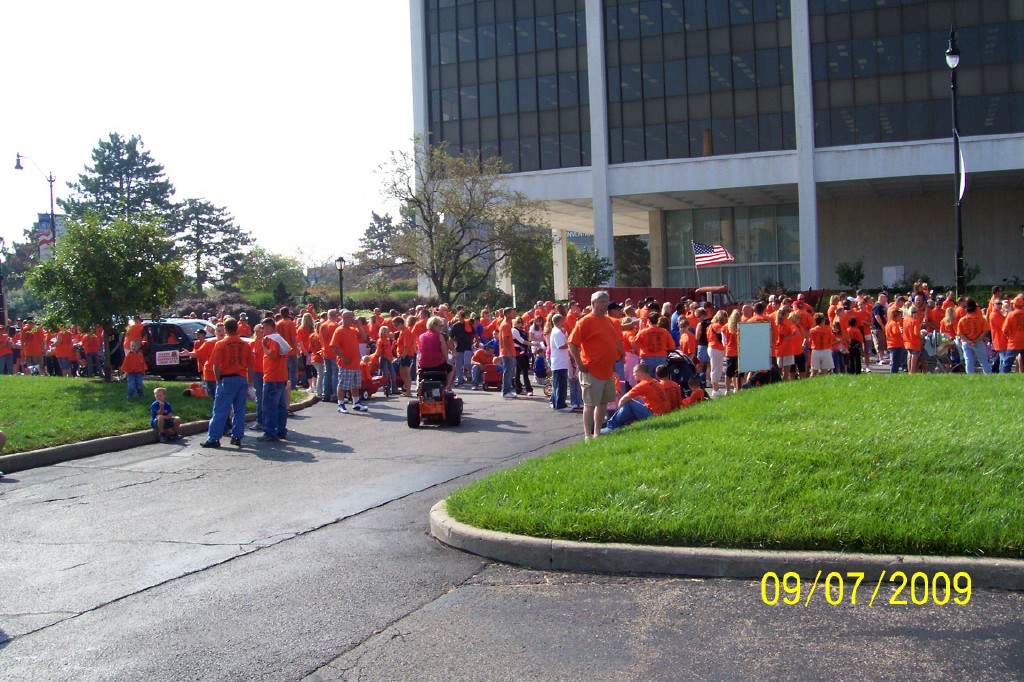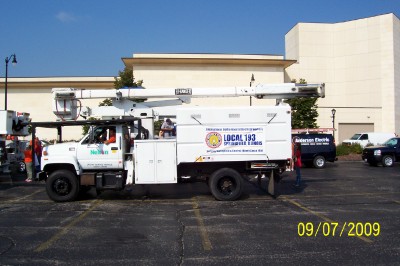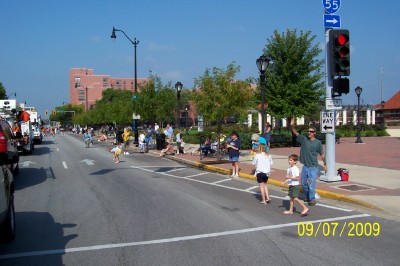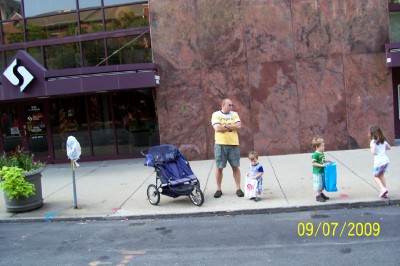It is Jam Band Friday –
http://www.bing.com/videos/search?q=you+can%27t+always+get+what+you+want&docid=1345780778117&mid=16E7403197023CEB494316E7403197023CEB4943&FORM=VIVR10
Everyone in this country has been programmed by rampant science fiction to believe that everything for the future comes from outer space. So the Japanese launch a press release about using a satellite to beam microwaves back to Earth.
http://www.physorg.com/news172224356.html
Let’s see, first you have to clean up the 13,000 pieces of space debris…then you got to up our payload capacity and multiple the number of vehicles available by at least 1,000. Just to START such a project. Hell we can barely generate enough capacity to keep the International Space Station running which is 160 volts in DC. Which gets us back to this final meditation on “living off the land”. There are somethings we will have to give up on and the first one is Space Flight. Why? Not because of the money and effort that could spent elsewhere. Not because of the hellishness of the logistics. NASA’s dirty little secret is Cosmic Rays. They would destroy any unshielded human and that is why the International Space Station is not in geosynchronous orbit or higher. Stewardesses and Pilots who regularly fly at high altitudes are exposed to enough Cosmic Rays to have a slightly higher chance of developing some cancers. That is why NASA limits the space station stay for astronauts to under a year. But what is the point of going out there?
GROWTH
If we replaced that with
Quality of Life
As a principle the world would be a much nicer and longer lived place.
:}
http://www.bing.com/videos/search?q=you+can%27t+always+get+what+you+want&docid=1322404807369&mid=9E85A21DF312D9016FDC57CBDDDC180567D96A9A&FORM=VIVR12
For those of you who want what you need and a simpler life there are many resources out there
http://www.livingoffgrid.org/
 Welcome to our free online resource for off-grid living.
Welcome to our free online resource for off-grid living.
We are here to help you along in the rewarding challenge of living off of the power grid. Whether you are a veteran off-grider living in an RV or cabin in the woods, a seasoned rural farmer, a third-generation rancher – or someone just looking to get out of the rat race – we have the information you seek.
Though sometimes a challenge, the many benefits of living off grid make it all worthwhile. How can one describe the feeling of running your house or business off of clean energy sources like natural gas and propane, or renewable energy sources like solar, wind and hydro? Who could explain the effect being out of the city and suburbs has on your sense of well-being? How many of us would enjoy more fresh produce grown organically on our own property?
This website isn’t just about owning property that happens to not be connected to the big power company’s grid. It is about living closer to the land; Being responsible for the culture, values and environment we leave behind to our children; knowing that life was meant to be enjoyed, rather than working in a tiny cubicle to earn enough to accumulate stuff we didn’t need in the first place.
Well, that’s what it’s about for me at least. But more importantly:
What is living off grid about to you?
:}
http://www.youtube.com/watch?v=A_vcFUAUXzY
You can even be a Dad and do it:
http://frugaldad.com/2009/04/05/living-off-the-grid/
Ever wish you could just unplug from your current hectic life? Maybe quit your stressful job, move to a farm with several acres, and spend your remaining time living off the grid. Yeah, me too.
The problem is that this type of lifestyle seems so simple, but is terribly difficult to pull off these days. Why? Because we have become slaves to our stuff – myself included. We have our houses, our cars, our expensive hobbies, our electronic gadgets, our new furniture, our designer clothes, etc.
We spend the majority of our lives working to pay for the stuff that keeps us from living a life with more freedom. Along the way we usually manage to accumulate debt buying more stuff than we can afford. So then we spend even more time working to repay the money we borrowed to buy the stuff that we work to pay for in the first place. Whew! It’s a vicious cycle.

Photo courtesy of iLoveButter
How To Break The Chains of Stuff?
So how do we break the cycle? How do we join others who are living off the grid? It isn’t easy. I believe the very first step is to stop accumulating stuff. Draw a line in the sand (or on your front porch), and vow not to allow anything else to enter your home unless it is a necessity or improves your quality of life in some way. If something qualifies under those two conditions, you must save for it and pay cash. No more borrowing!
The second step is to take a look around your house, and your budget. Are you paying for things that you could really live without? The $40 gym membership, or the $15 Netflix membership, may not seem like much by themselves, but how much of a nest egg would be required just to cover those expenses? I mentioned the multiply by 25 concept in a previous post. The idea is that you can estimate how much of your nest egg would be required to maintain your current expenses. I used Netflix as an example:
:}
http://www.youtube.com/watch?v=iX1OVXTplos
http://www.youtube.com/watch?v=ymLRWZG4u24
The movement is not just limited to the US.
http://www.off-grid.net/
Section:
— by Alexbenady, 30 Oct

Simpson: Local hero
The UK is in the grips of a power cartel, says an insider from the governing UK Labour Party.
That cartel actively hinders the fight against global warming by lobbying for its own narrow commercial interests at the cost of local democracy and the future health of the planet. It’s an argument that off-gridders and anti-capitalist campaigners will be familiar with. It’s not really what you expect to hear from an advisor to Her Majesty’s Government. Yet it is precisely the belief of Alan Simpson, who occupies a place close to the heart of political power in Britain as energy advisor to the Secretary of Energy and Climate Change, Ed Miliband and Member of Parliament for Nottingham South.
>>Keep reading Top govt advisor attacks Big Power Your Comments: 0
Submit this story to: Twitter Digg Del.icio.us StumbleUpon:}
http://www.bing.com/videos/search?q=you+can%27t+always+get+what+you+want&docid=1346708637036&mid=00EB313253A0B35936F300EB313253A0B35936F3&FORM=VIVR34
Some people even thrive in an “off the grid” living:
http://www.eartheasy.com/blog/2009/06/what-its-like-living-off-grid/
By Greg Seaman Posted Jun 9, 2009
 In the summer of 1980, my wife, three-month old son and I moved “off-grid”. We loved living in San Francisco but wanted to live a simpler, more independent lifestyle, and so we bought a small cabin with land on a rural island in the Pacific Northwest. Since there were no services to the island, our home had no electricity. Residents of the island had to create their own electricity or do without.
In the summer of 1980, my wife, three-month old son and I moved “off-grid”. We loved living in San Francisco but wanted to live a simpler, more independent lifestyle, and so we bought a small cabin with land on a rural island in the Pacific Northwest. Since there were no services to the island, our home had no electricity. Residents of the island had to create their own electricity or do without.
Now here I sit, almost 30 years later, with the kids grown and their rooms empty, and with some time to reflect on our experience living and raising a family off-grid. But before even considering the challenges and solutions in dealing with our energy needs over the years, one observation seems to leap out: how little things here have changed. We’ve done very little over the years to enhance our energy needs, aside from installing two solar panels last year to power the computer I’m using to write this article. (Alongside my computer on the table here is a kerosene lamp, and a candle for added light.) This lack of change is testament to the feasibility of off-grid living, and my vision for the upcoming years is to keep things pretty much the way they are.
But keeping it simple hasn’t always been simple. We had to learn alternate methods of preserving food, how to build things without power tools, how to cook on a wood stove, how to clean diapers without a washing machine, entertain ourselves without TV, and accept that many common tasks can take longer and be more difficult without electricity. Here are the main challenges we encountered in living off-grid, and how we managed with them.
:}
For much more:
http://www.emagazine.com/view/?2650
http://www.coyotecottage.com/
http://science.howstuffworks.com/living-off-the-grid.htm
http://www.bringaboutgreen.com/
:}
Oh yah and the people that made the song famous:
http://www.youtube.com/watch?v=OPCRIFLjfPo
:}











 AHE Featured on the Cover of the Sept/Oct 2009 Edition of Home Energy Magazine!
AHE Featured on the Cover of the Sept/Oct 2009 Edition of Home Energy Magazine!


 Welcome to our free online resource for off-grid living.
Welcome to our free online resource for off-grid living.

 In the summer of 1980, my wife, three-month old son and I moved “off-grid”. We loved living in San Francisco but wanted to live a simpler, more independent lifestyle, and so we bought a small cabin with land on a rural island in the Pacific Northwest. Since there were no services to the island, our home had no electricity. Residents of the island had to create their own electricity or do without.
In the summer of 1980, my wife, three-month old son and I moved “off-grid”. We loved living in San Francisco but wanted to live a simpler, more independent lifestyle, and so we bought a small cabin with land on a rural island in the Pacific Northwest. Since there were no services to the island, our home had no electricity. Residents of the island had to create their own electricity or do without.






